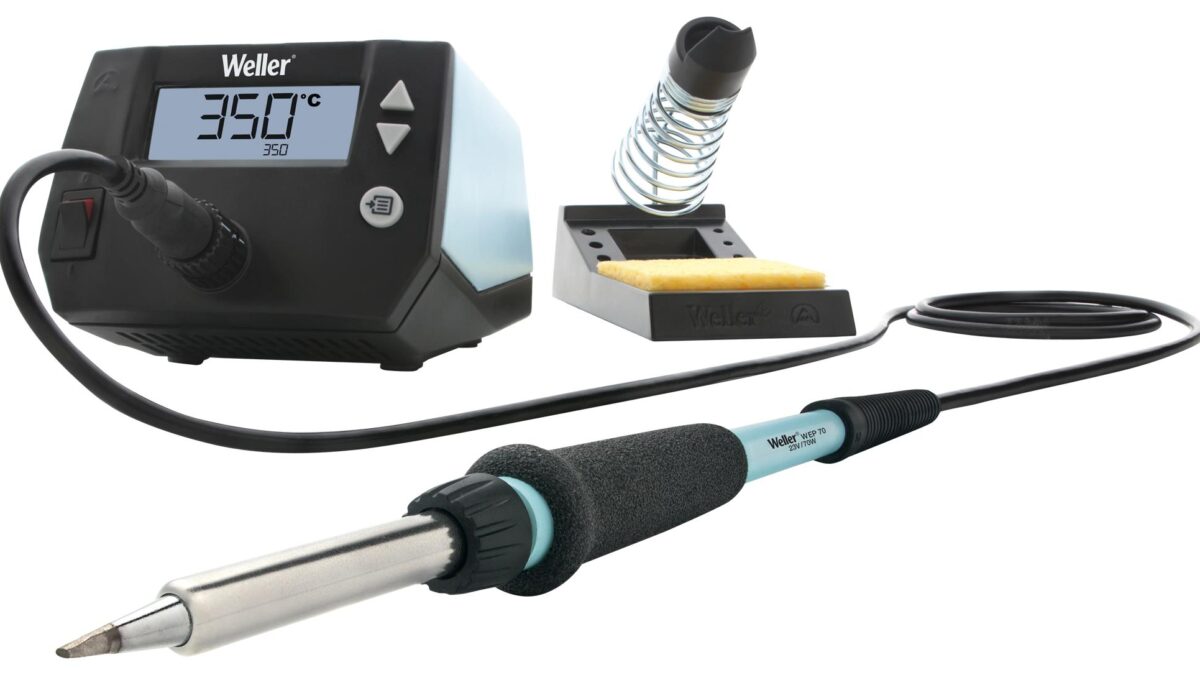Temperature control is a critical aspect of soldering that directly impacts the quality of solder joints and the overall success of electronic projects. Soldering stations are equipped with temperature control features that allow users to regulate the temperature of the soldering iron or soldering tool. In this guide, we’ll explore the importance of temperature control in soldering stations and why it matters for achieving professional results.
The Role of Temperature Control in Soldering:
In soldering, temperature control is essential for several reasons. The soldering process relies on the precise application of heat to melt the solder and create strong, reliable electrical connections between components. The temperature must be carefully controlled to ensure that the solder melts evenly and flows smoothly onto the joint without causing damage to the components or the circuit board.
Why Temperature Control Matters:
Compatibility with Various Solder Types:
Different types of solder alloys require specific temperature ranges for proper melting and bonding. Temperature control allows soldering stations to accommodate a wide range of solder types, including lead-free solder, flux-core solder, and specialty solder alloys, ensuring compatibility with diverse soldering applications.
Consistent Soldering Results:
Proper temperature control ensures consistent soldering results, regardless of the type of solder or components being used. Maintaining a stable temperature allows the solder to flow smoothly and adhere to the joint, creating strong and reliable connections.
Prevention of Component Damage:
Excessive heat can damage sensitive electronic components, such as integrated circuits (ICs), resistors, and capacitors. Temperature control prevents overheating and minimizes the risk of component damage during the soldering process, preserving the integrity of the circuitry.
Enhanced Soldering Precision:
Temperature control enables soldering operators to adjust the temperature of the soldering iron or tool based on the specific requirements of the project. This precision allows for finer control over the soldering process, resulting in cleaner and more precise solder joints.
Minimization of Soldering Defects:
Inadequate temperature control can lead to soldering defects such as cold joints, solder bridges, and solder balls. These defects can compromise the electrical conductivity and mechanical strength of the solder joint, resulting in circuit malfunctions or failures. Proper temperature control helps minimize the occurrence of soldering defects, ensuring the reliability and performance of electronic assemblies.
Types of Temperature Control:
Soldering stations utilize various temperature control mechanisms to regulate the temperature of the soldering iron or tool:
Analog Temperature Control:
Analog soldering stations feature a dial or knob that allows users to manually adjust the temperature of the soldering iron. While analog controls are straightforward to use, they may lack precision and accuracy compared to digital temperature control systems.
Digital Temperature Control:
Digital soldering stations incorporate advanced temperature control systems with digital displays and microprocessor-based technology. These stations offer precise temperature adjustment and real-time temperature monitoring, ensuring optimal soldering performance and consistency.
Temperature Lockout:
Some soldering stations feature temperature lockout or temperature calibration features that prevent unauthorized users from changing the temperature settings. Temperature lockout helps maintain consistency and reliability in controlled manufacturing environments where precise temperature control is critical.
Tips for Effective Temperature Control:
To achieve optimal soldering results, consider the following tips for effective temperature control:
Calibrate Your Soldering Station:
Regular calibration ensures that your soldering station maintains accurate temperature readings and consistent performance over time. Follow the manufacturer’s instructions for calibration or consult a qualified technician for professional calibration services
Preheat Your Soldering Iron:
Preheating your soldering iron allows it to reach the desired temperature quickly and evenly, minimizing temperature fluctuations during soldering. Allow sufficient time for the soldering iron to reach the set temperature before beginning soldering operations.
Use Temperature-Resistant Materials:
When soldering at high temperatures, use temperature-resistant materials such as heat-resistant soldering pads or silicone mats to protect your work surface from heat damage and prevent solder splatter.
Monitor Temperature Closely:
Keep a close eye on the temperature display or indicator on your soldering station while soldering. Adjust the temperature as needed to maintain consistent soldering performance and prevent overheating or underheating.
Experiment with Different Temperature Settings:
Different soldering applications may require different temperature settings based on factors such as solder type, component size, and circuit board material. Experiment with different temperature settings to find the optimal temperature for each soldering task.
Final Thoughts:
Don’t underestimate the power of a steady hand on the heat! Temperature control is the secret weapon of successful soldering. Soldering stations with this feature let you dial in the exact temperature for the job, preventing fried components and ensuring flawless connections. Consistent heat means consistent results, with fewer defects and the ability to work with different solder types. Mastering temperature control takes your soldering from hobbyist to pro, guaranteeing the long-lasting success of your electronic creations.


